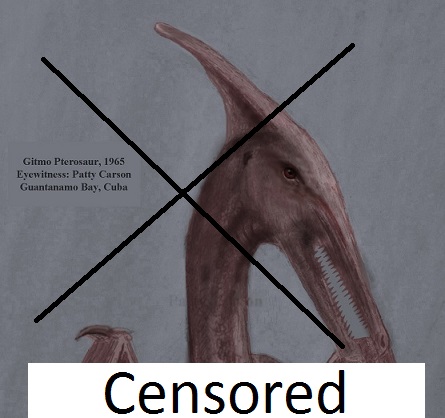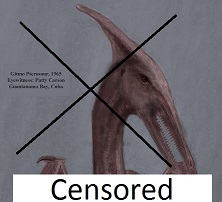By the investigative journalist Jonathan Whitcomb
The “ropen” page on Wikipedia, at one time, had many paragraphs, delighting some cryptozoologists but annoying some skeptics. One biology professor in Minnesota, in particular, detested the many web pages he saw that supported belief in modern living pterosaurs, including the long-tailed ropen. It may have been a coincidence, but when he wrote his own blog post, ridiculing me about my writings about the ropen—that was about the time that the “ropen” page became extinct on Wikipedia. With limited warning, it was deleted, with the excuse that it did not provide enough mainstream opinion about the flying cryptid.
Why did no biologist or paleontologist seem to make any “ropen” statement on Wikipedia? Who knows? I tried to quote the words of one paleontologist Dr. David Martill, to save the Wikipedia page from deletion, but one self-appointed editor, with not enough patience to look deeply, deleted my quotation. It was unfair, but I could not spare more hours of work to submit text that could again be deleted within five minutes.
 The “Ropen” page was censored through deletion on Wikipedia
The “Ropen” page was censored through deletion on Wikipedia
I don’t think Dr. Martill (the pterosaur fossil expert) had anything to do with deleting the Wikipedia page; whether of not the biology professor in Minnesota caused the censoring, directly or indirectly, I don’t know. But since the man in Minnesota railed against the countless web pages that I, Jonathan Whitcomb, have written on the subject of modern pterosaurs, I now submit the following as evidence that I am not the “only” source of information about ropens. None of the following three pages were written by me:
I don’t believe this page is perfectly accurate in all details. The wingspan estimate given by Duane Hodgkinson was actually about twenty-nine feet rather than twenty feet, for it was similar to the size of a Piper Tri-Pacer. Also, I do not believe that “demon flyer” is the literal meaning of the word “ropen.”
I also see problems with some details on this page, including the wingspan estimates and confusion about “ropen” and “duah.” Different names of flying creatures, among natives having hundreds of different village languages, is hardly evidence that different species of animals are being described. Some ropens are small and older ones are larger. “Duah” surely is a mistake by a Western explorer, many years ago; the correct name is “duwas.”
This actually has little text. It does mention extinction being avoided by this “pterodactyl”-like creature. The page has links to Destination Truth pages on cryptids like the Orang Pendek, Ogopogo, and Swamp Ape.
.
Critics and Bulverism
The British author and philosopher C. S. Lewis used the word “bulverism” for the habit some people fell into to avoid actual reasoning on topics. A person may dismiss an opposing idea by explaining why the opponent is “so silly.” Some critics of modern-pterosaur investigations find fault with imagined motivations of me and my associates, using that bulverism to avoid the real issue of whether or not all species of pterosaurs became extinct. Why not, instead, just discuss the subject?
UPDATE: January 3, 2019
As of January 2, 2019, there is still no page on the English Wikipedia named “ropen.” On the other hand, it does have a page titled Kongamoto, which is about a cryptid in Africa that seems to resemble the ropen of Papua New Guinea. Wikipedia also has a page on the winged cryptid Orang-bati, which is reported to fly in Indonesia.
###
Ropen made extinct on Wikipedia
. . . his blog post may have contributed to the extinction of that page on Wikipedia, however (“There are no living pterosaurs and ‘ropen’ is a stupid fantasy”). It seems likely that one or more of his students or one or more of the readers of his post were involved.
Ropen Q & A – Modern Pterosaur
I just got an email from a reader of my digital nonfiction book Live Pterosaurs in Australia and in Papua New Guinea. The man’s questions deserve answers but for everybody, not just this one reader.
.





